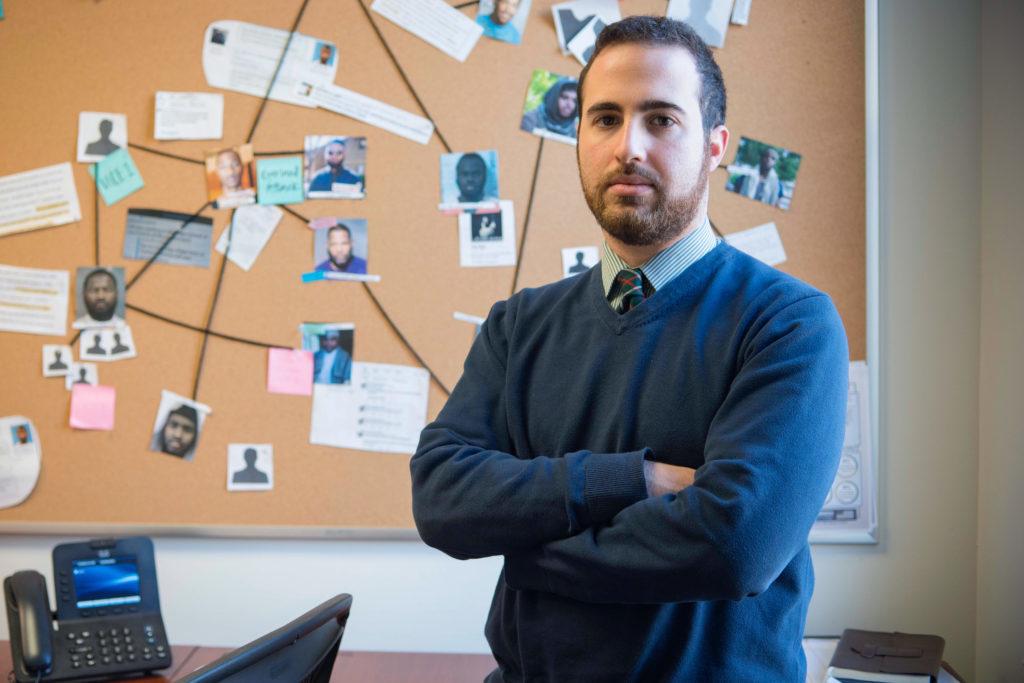Sixty-four American citizens have traveled to Iraq and Syria since 2011 to join terrorist groups, according to a new report by GW’s Program on Extremism – the most comprehensive ISIS study ever compiled in an academic setting.
The 87-page document, titled “The Travelers: American Jihadists in Syria and Iraq” and published Tuesday, details the paths that home-grown terrorists have taken to link up with groups like ISIS in the Middle East. The report’s authors said the study provides key new insight into the motivations that drive American citizens to take up arms with ISIS and will help U.S. policy makers confront the threat posed by these groups.
The study, which took two years to complete, was compiled by three research fellows using material obtained through Freedom of Information Act requests, interviews with family members of travelers, law enforcement officials, social media accounts and in some cases, interviews with Americans who have returned after a stint with ISIS in Iraq and Syria.
Bennett Clifford, a research fellow in the Program on Extremism and a co-author of the report, said the study is the largest publicly available research into American participation in jihadist groups located in Syria and Iraq.
“We hope it improves public understanding and debate about this phenomenon and assists policymakers in developing solutions to the threat,” Clifford said in an email.
The findings showed American travelers who successfully made it to Syria and Iraq do not fit one single demographic, but come from all walks of life and at least 16 U.S. states. Few have returned home after traveling to Iraq and Syria and many were killed in battle or remain members of these groups, he added.
For ISIS sympathizers who did not reach their destination, Clifford said the report found that punishment from U.S. law enforcement was less severe than those who were able to successfully reach jihadist-controlled territory.
The report mainly looks at data on 64 U.S. nationals who were successfully able to link up with terror groups – mainly ISIS – through three main pathways.
There were the “pioneers,” who joined the cause early and gained preeminent positions through skill sets like bomb making and knowledge of propaganda, the “networked travelers,” who were able to travel and join other jihadist supporters through personal connections and the “loners,” who used online connections to gain access into extremist groups, according to the report.
Alexander Meleagrou-Hitchens, a research director at the Program on Extremism and co-author of the report, said during a panel discussion to unveil the report Tuesday that “networked travelers” made up 87 percent of the 64 cases studied and remained the most common route for joining extremist groups.
“The thing to get across here is the sense of the importance of connections that are essential to people’s decisions,” he said at the event.
Because much of the data on the 64 American travelers was collected through case studies – both in person and through personal documents – the report also contains stories of life within jihadist territory, including anecdotes about children growing up under ISIS rule and the functions of training camps that teach jihadist ideology.
In an interview with an American who had returned from ISIS, one interviewee – called “Mo” – said ISIS operatives were shuttled between facilities to gain military training and identify what role they might be best suited for.
“At each camp Mo attended, he was required to fill in a Microsoft Access form with details of his age, experience and what he felt he could offer IS,” the report states. “He was offered the choice of being a fighter, a suicide bomber or an inghimasi, which refers to someone who fights on the front line while wearing a suicide vest.”
One prospective ISIS recruit even sent a resume and cover letter highlighting his passion for teaching in hopes of joining the group, according to the study.
The report also noted that substantially more European than U.S. nationals traveled to Iraq and Syria to fight with ISIS. About 5,000 to 6,000 came from Europe compared to about 250 to 300 from the U.S. since the declaration of the Islamic State in 2014, according to the report.
“Most of the 250 to 300 American jihadist recruits mentioned by authorities have not been publicly identified, suggesting ongoing investigations, sealed indictments and some uncertainty,” the report states.
Seamus Hughes, the deputy director of the Program on Extremism, said the two-year process of compiling data for the report was “no easy undertaking,” and in some cases involved driving hundreds of miles to talk to sources.
The report is now the most comprehensive work on the subject, he said. He added that he hopes it would help officials understand terrorist motivations and support networks.
“We’ve gotten hundreds of new documents. We reviewed thousands of pages of legal documents,” Hughes said. “We did this as part of a team to cover the angles.”





